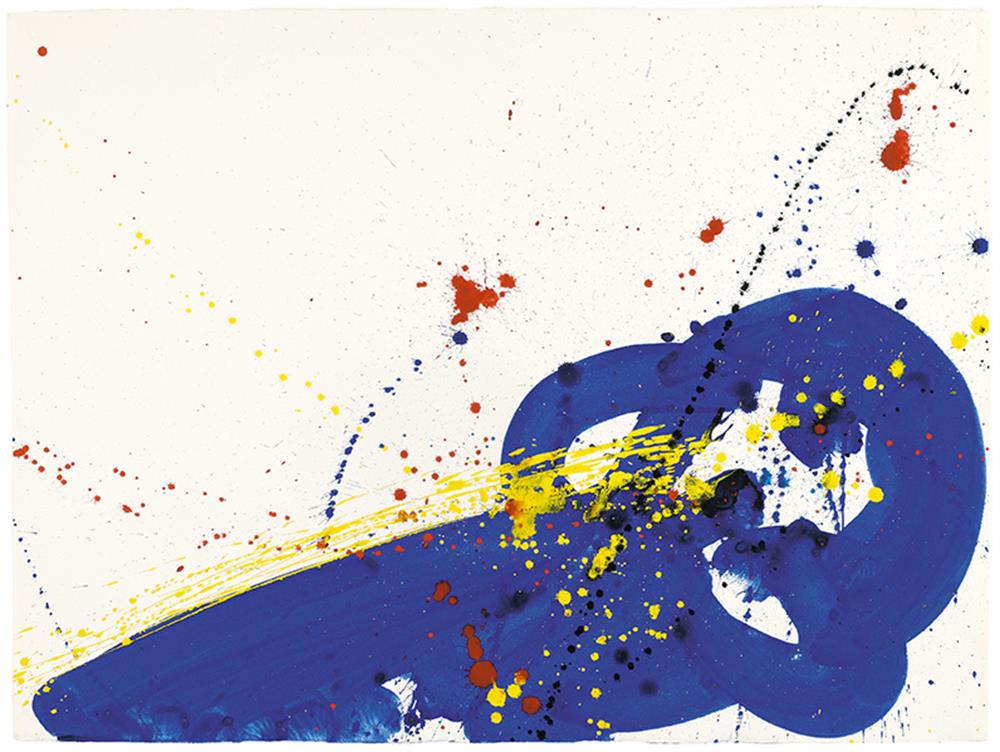
San Mateo, California 1923 - 1994 Santa Monica, California
Untitled
Gouache and acrylic on paper
57.5 x 75.9 cm
Signed, dated and inscribed on the reverse: Sam Francis 1964 Los Angeles
This work is identified with the interim identification number of SF64-065 in
consideration for the forthcoming Sam Francis: Catalogue Raisonné of Unique Works on Paper.
Ausstellungen:
Düsseldorf, Galerie Ludorff, "Sam Francis. Space & Containment", 2021
Literatur:
cf. Exhibition catalogue "Sam Francis", Kunst- und Ausstellungshalle der Bundesrepublik Deutschland, Bonn 1993, ill. p. 291
Exhibition catalogue, "Sam Francis. Space & Containment", ed. by Manuel Ludorff, Rainer M. Ludorff, Galerie Ludorff, Düsseldorf 2021, no. 30
Sam Francis, whose 100th birthday falls this year, was born in San Mateo, California in 1923 and is counted among America’s most important artists. Francis studied art history and fine arts at the University of California from 1948 to 1950. At this time, he was influenced in particular by the abstract Expressionists in the circle around Mark Rothko. Following his studies, Francis moved to Paris, where his style of tachisme crystallised. In 1962 he returned to California and settled down in Santa Monica. In the 1970s, the artist, who in the meantime had built a career in art, turned to Action Painting, of which he is one of the most prominent representatives. Sam Francis died in Santa Monica in 1994. Two basic factors determine the incredibly dense and amazingly varied œuvre of the cosmopolitan artist Sam Francis, who commuted between studios in California, Paris, Tokyo, New York and Bern: colour and space. ‘Space – color, you cannot have one without the other.’1 Sam Francis’ desire for colour is significant. He, who is constantly apostrophised as a psalmist of glowing, intense and pure colour, placed powerful, glowing contrasts in red, blue and yellow in front of a background structured by dropped spots of paint and set in vibrations, opening up into expansive space. The artist celebrated early successes as a protagonist of the young avantgarde in Paris, and also won popularity in the USA in 1956 with his participation in the group exhibition titled ‘Twelve Americans’ in the Museum of Modern Art in New York. In 1957, he undertook a first trip around the world. This also took him to Japan, among other places. Asian ways of thinking, the Japanese lifestyle and culture played an important role from this time on in the life and art of the painter, who was married (consecutively) to two Japanese female artists. In 1964, the year our picture was created, Sam Francis was already represented at the 32nd Venice Biennale and at the documenta III in Kassel. Sam Francis’ pictures from the period after 1957 were essentially painted on the floor. Based on a highly concentrated working method, Sam Francis let the colours drip directly from the wooden stick he had stirred them with on to the picture medium, using circling and spattering movements, in a manner seemingly spontaneous. The artist started painting from the edge onto his large canvases using brushes attached to poles – dubbed harpoons by him, recalling ‘Moby Dick’ – which he dipped in paint buckets. Blots, splashes, drops, accents made with a broad brush and strands of paint pressed from the tube mix with calligraphic, meandering trickles of paint and brightly coloured, intensely glowing islands of colour in front of a white background.
1 Notes by Pontus Hulten after conversations with Sam Francis 1976 – 1992, in: Exhibition catalogue ‘Sam Francis. Retrospektive’, Kunst- und Ausstellungshalle der Bundesrepublik Deutschland, Bonn 1993, p. 55
